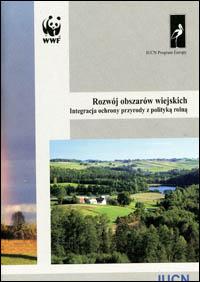

Related content
Wzmacnianie naszego dziedzictwa zestaw narzędzi 2.0 : ocena efektywnosci zarzadzania dobrami swiatowego dziedzictwa i innymi miejscami dziedzictwa
World Heritage properties are internationally recognized as places of Outstanding Universal Value that should benefit from the highest level of management effectiveness. The Toolkit 2.0 offers a self-assessment methodology to evaluate management effectiveness in a World Heritage property or other heritage place. It contains 12 tools that can be used separately or collectively to understand in detail what is working well and what can be done better. The Toolkit supports managers in identifying ways to improve conservation practices, management processes and resource allocation – particularly if used before reviewing or updating management plans. While there is a focus on World Heritage, it can be applied to all heritage places, whether natural, cultural or combinations of both.
Xiamen practice – a case study of integrating Nature-based Solutions in coastal city development
As a typical coastal city, Xiamen, Fujian Province, China, faces serious societal challenges such as the impact of climate change, overexploitation of natural resources, and loss of biodiversity. Xiamen is implementing Nature-based Solutions (NbS) by strengthening ecological protection, promoting ecosystem restoration, building sponge city, supporting sustainable community development and green transformation of mines, while encouraging funding and diverse public participation. After more than 30 years of exploration and practice, the green development concept of harmonious coexistence between man and nature has been integrated into areas and processes of Xiamen’s economic and social development, making Xiamen’s practice a global example of excellence in NbS and a model for sustainable development of coastal cities.
让企业参与自然保护
With 26 case studies from 10 multinational companies, this publication highlights their positive actions, interventions and initiatives contributing to specific conservation and restoration goals. The concrete examples illustrate a pivotal part of their work which have direct impacts on biodiversity and ecosystem on their sites and operations, focused on a variety of additional and proactive biodiversity conservation and restoration actions more commonly within the landscape and seascape. The different case studies seek to present current voluntary practices and initiatives that are above and beyond addressing the negative impacts on biodiversity and ecosystem services onsite. While not exhaustive, these case studies seek to be illustrative of current voluntary practices and demonstrative of some of the kinds of initiatives that are currently being carried out.
Zarzadzanie ryzykiem katastrof w światowym dziedzictwie
The objectives of this manual are: to help the managers and management authorities of cultural and natural World Heritage properties to reduce the risks to these properties from natural and humanmade disasters; to illustrate the main principles of Disaster Risk Management (DRM) for heritage and a methodology to identify, assess and mitigate disaster risks; to explain how to prepare a DRM plan based on this methodology; to demonstrate that heritage can play a positive role in reducing risks from disasters; and to suggest how DRM plans for heritage properties can be integrated with national and regional disaster management strategies and plans.
Przygotowywanie wniosków o wpisanie na Listę światowego dziedzictwa : wersja druga
The manual is based on the version of the “Operational Guidelines for the Implementation of the World Heritage Convention” dated August 2011 and seeks to complement it. In particular, the manual seeks to support States Parties in implementing the World Heritage Convention and to provide guidance and knowledge that will help ensure a credible World Heritage List of well-managed properties of Outstanding Universal Value. it is hoped that the manual will help States Parties to carefully consider the implications of proceeding with World Heritage nominations and take the necessary steps to ensure that the effort is worthwhile for both the conservation of the property and the well-being of local communities and other local stakeholders.
Wytyczne i zestaw narzędzi do ocen oddziaływania w kontekście światowego dziedzictwa
As the World Heritage Convention celebrates its 50th anniversary in 2022, over 1100 sites around the world are recognized as World Heritage – places that are so valuable to humanity that there conservation has been deemed our collective responsibility. Yet many of these exceptional places face increasing pressure from diverse types of development projects within and around the sites. Assessing the impacts of such projects is essential to both prevent damage to World Heritage and identify sustainable options. This Guidance and toolkit explains the process for achieving these goals. Offering practical tips and tools including checklists and a glossary, it provides a framework for conducting impact assessments for cultural and natural heritage sites.
Global strategy on invasive alien species
The spread of invasive alien species (IAS) is creating complex and far-reaching challenges that threaten both the natural biological riches of the earth and the well being of its citizens. Summarising key findings of the Phase I Synthesis Conference held in September 2000 in Cape Town, Republic of South Africa, this publication presents ten strategic responses that address how to mitigate the threats of IAS. Directed toward the decision-makers whose policies and practices are affecting the movement of species around the world, this strategy strives to provide a resource to increase awareness and provide policy advice.

